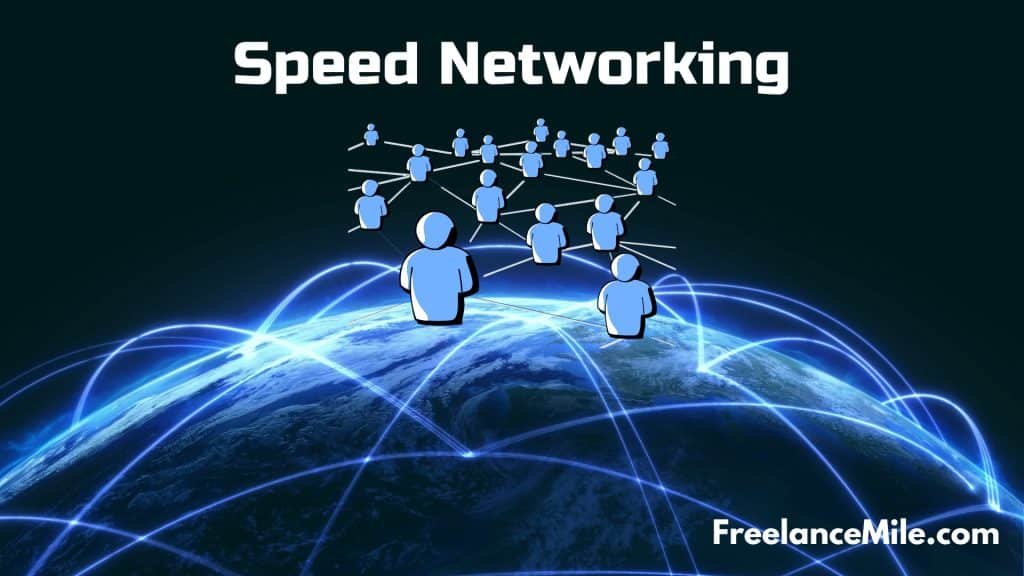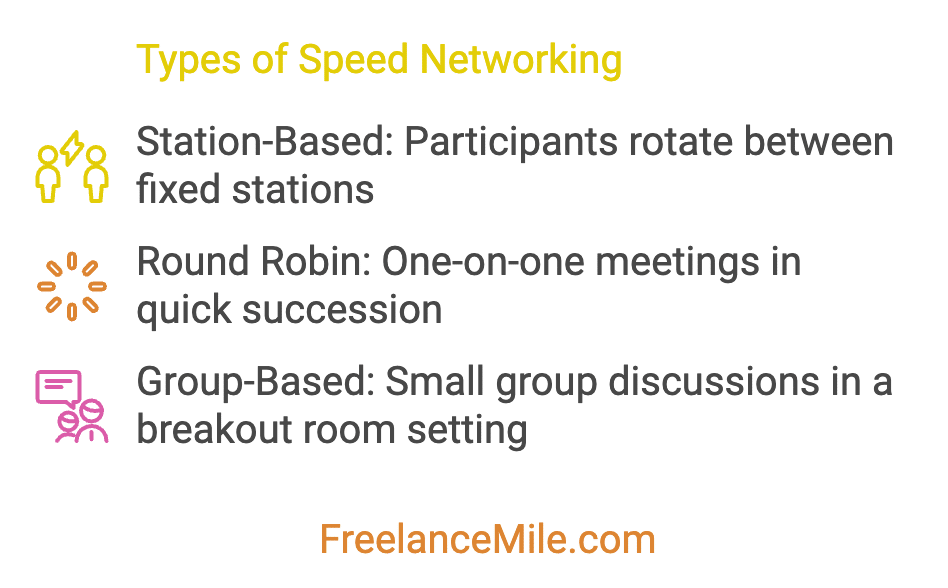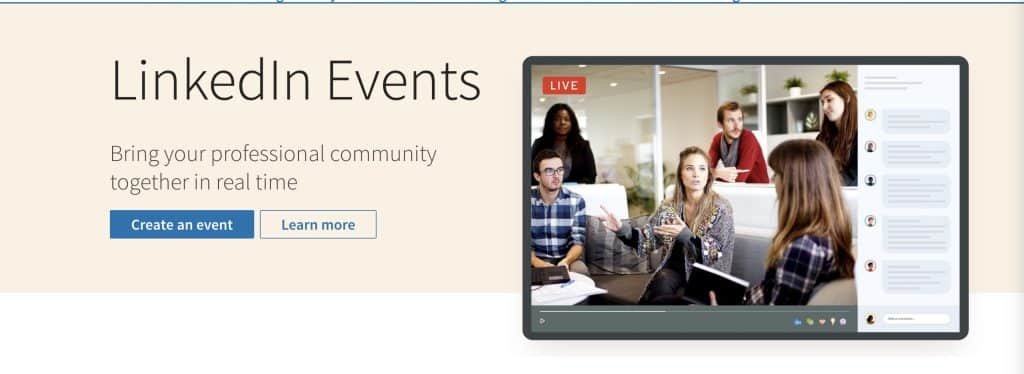Speed networking is a fast way to grow your professional network. You can make important connections in just a few minutes. To get good at it, work on your elevator pitch, listen well, and follow up fast.
This guide will teach you everything about speed networking. It will help you make the most of these quick networking events. If you have questions, ask in the comments below, and I’ll help.
Speed networking events are short, lasting about three minutes each. This lets you meet many people in one go. With Zoom, these events are even easier to join, thanks to features like breakout rooms.
Speed networking can really work. For example, one person had 121 follow-up meetings from these events. Another found success with hypnotherapy services from contacts made at speed networking events. These connections can lead to more business and help you grow professionally.
Key Takeaways
- Speed networking allows for quick, meaningful connections in professional settings
- Optimal conversation length is typically three minutes per interaction
- Virtual platforms like Zoom enhance accessibility and engagement
- Prepare a concise, impactful elevator pitch for best results
- Follow-up is crucial for turning brief encounters into lasting professional relationships
- Speed networking can lead to numerous business opportunities and referrals

Understanding the Concept of Speed Networking
Speed networking is a quick way to make new connections and grow your professional network. It’s become popular for meeting new business contacts fast.
Definition and Origin
Speed networking events are like speed dating but for work. People have short, timed talks with others, usually 2-5 minutes. It started in the early 2000s to make networking faster.
Purpose and Benefits
The main aim of speed networking is to quickly find new professional connections. Studies show 85% of jobs come from networking. Speed networking helps you:
- Meet many potential contacts fast
- Practice your quick introduction
- Find new chances in your field
- Grow your professional network quickly
Comparing Speed Networking to Traditional Networking
Speed networking is more organized than traditional events. Here’s how they compare:
| Speed Networking | Traditional Networking |
| Has a set format with timed talks | Has free-form chats |
| Can meet up to 10 people an hour | Varies in the number of contacts |
| Has focused, quick talks | Includes small talk and long chats |
| Uses tech for best matches | Depends on chance meetings |
Speed networking is a quick way to get professional contacts. With the right strategy, you can make the most of these events and grow your career.
How Speed Networking Works
Speed networking is a quick way to meet people. It’s a mix of quick introductions and business networking. Let’s look at how these events are set up and run.
Event Structure and Format
Speed networking events last 60-90 minutes. People meet for short times, usually 6 minutes. The best number of people is 20-30.
A buzzer tells everyone it’s time to move on. This keeps the pace fast.
Time Management in Speed Networking
Speed networking is all about using time well. In a round-robin setup, you can meet up to 10 people in an hour. Station-based events let you meet 7-10 people per hour.
Group-based networking has tables of 4-10 people. Introductions last 5-15 minutes.
Types of Speed Networking Models
There are three main types of speed networking:

| Model | Format | Contacts per Hour | Session Length |
| Round Robin | One-on-one | 10 | 6 minutes |
| Station-Based | Rotating stations | 7-10 | Varies |
| Group-Based | Small groups | 4-10 per group | 5-15 minutes |
Each type of networking round has its own benefits. The group-based model is often the most effective. It uses smart seating plans to help people connect well.
Preparing for a Speed Networking Event
Getting ready for a speed networking event can make your experience better. Start by making a memorable elevator pitch. This 30-second speech should show your skills and interests. It should be easy for others to understand your goals.
Do your homework on the event and who will be there. Knowing this helps you tailor your approach. You can also set clear goals for the event, like finding a job or a mentor.
Bring important things to the event:
- Business cards with your contact info
- A notebook and pen for notes
- A positive attitude and friendly smile
Dress professionally to make a good first impression. Your clothes show how you see yourself in a professional setting. Practice a firm handshake, finding the right balance.
Being real is important in networking. Be yourself and focus on helping others first. Ask how you can help, not what they can do for you. This way, you’ll make meaningful connections and have a great time.
Michele Jennae, a networking expert, emphasizes the importance of building meaningful connections not just between individuals, but also between individuals and their ideas and opportunities. She suggests that true networking is about fostering relationships that lead to growth and collaboration.
By following these tips, you’ll be ready to make the most of your speed networking event. You’ll build valuable professional relationships.
Speed Networking: Maximizing Your Connections
Speed networking is all about meeting lots of people. The more you meet, the better your chances of finding meaningful connections. Focus on three key things: your elevator pitch, listening well, and exchanging contacts efficiently.
Crafting an Effective Elevator Pitch
Your elevator pitch is key. It should be short, sweet, and memorable. Talk about your unique skills and how you solve problems. Practice it until it feels natural.
Remember, you’re not just selling yourself. You’re starting a conversation.
Active Listening and Engagement Techniques
Listening is as important as talking. Show you’re really interested in your partner. Ask questions that show you care.
Look for ways you can help each other. This builds trust and opens doors to real connections.
Exchanging Contact Information Efficiently
Speed networking is fast-paced. Have your contact info ready to share quickly. Business cards are good, but digital options are becoming popular.
Offer something valuable along with your contact info. This could be a useful connection or resource.
| Strategy | Benefit | Implementation |
| Elevator Pitch | Quick introduction | 30-second summary |
| Active Listening | Build rapport | Ask follow-up questions |
| Efficient Contact Exchange | Save time | Use digital business cards |
Speed networking is about quality, not just quantity. Aim for real connections, not just a long list of contacts. With these tips, you’ll excel at your next speed networking event.
Leveraging Technology in Speed Networking
Technology has changed speed networking for the better. Now, 61% of marketers want to spend more on digital events. This means more chances to meet people from all over.
Social media is key for networking today. Sites like LinkedIn and forums help you connect before, during, and after events. You can talk before the event, share ideas, and keep in touch after.
Event apps are a must for speed networking. They give you easy access to event details and help you network. For online events, learning how to use video conferencing tools is important.
| Technology | Usage in Speed Networking | Benefits |
| Virtual Event Platforms | Host online networking sessions | Global reach, cost-effective |
| Social Media | Pre-event engagement, follow-ups | Extended networking opportunities |
| Event Apps | Access event information, connect with attendees | Streamlined communication, efficient networking |
| Digital Business Cards | Quick information exchange | Eco-friendly, easy to update and share |
Digital business card apps are a cool way to share contact info. They let you share your details with just a tap or scan. No need for paper cards and it’s easier to follow up.
Using these tech tools can make your speed networking better. You can make lasting connections in our digital world.
Organizing a Successful Speed Networking Event
Planning a speed networking event needs careful thought. Think about the venue, who will attend, and how they’ll sit. Your goal is to help people make meaningful connections quickly.
Choosing the Right Venue or Platform
Select a venue that suits your event size and style. For live events, make sure there’s enough room for people to move. Online events should have rooms for smaller groups. Try to keep each meeting short, around 3-5 minutes, to keep everyone engaged.
Participant Selection and Invitation Process
Make your sign-up easy to get the info you need. Ask about their work to pair them well. Send out clear details about the event, like the schedule, before it starts. This helps make the event better for everyone.
Creating an Optimal Seating Plan
Plan your seating to help people meet others they might not usually talk to. For group events, aim for 16-30 people. Use the info you collected to pair people wisely. Give out name tags with names and jobs to make introductions easier.
| Event Component | Recommended Approach |
| Interaction Time | 3-5 minutes per pairing |
| Group Size | 16-30 participants |
| Session Duration | 30 minutes maximum |
| Event Timing | Midway through or towards end of day |
Success in speed networking comes from good planning and clear communication. Focus on these to make your event a place for growth and new connections.
Overcoming Common Challenges in Speed Networking
Speed networking can change your career, but it has its own challenges. Let’s find ways to beat these and succeed in networking.
Managing Time Constraints
The time limit in speed networking can be tough. Work on your elevator pitch to make every second count. Use a timer to get used to the pace.
Remember, it’s better to have a few good connections than many shallow ones.
Dealing with Nervousness and Social Anxiety
It’s normal to feel nervous before a networking event. Get ready well to feel more confident. Instead of just talking about yourself, help others.
Start with simple questions about the event to make it easier to talk.
Following Up After the Event
Your networking doesn’t stop after the event. Send emails quickly that mention what you talked about. Connect on LinkedIn and share their posts to keep in touch.
| Challenge | Solution |
| Time constraints | Practice concise introductions, use timers |
| Nervousness | Prepare thoroughly, focus on helping others |
| Social anxiety | Start with simple questions, set contact goals |
| Follow-up | Send personalized emails, connect on LinkedIn |
Networking gets better with practice. Every event is a chance to get better and meet new people. Take on the challenge and watch your network grow!
Conclusion and Future Predictions
Speed networking is key for growing your professional network. As we head into 2024, it’s getting even better. It now uses new tech to make connections faster.
The world’s economy has changed how we learn and meet people. This makes speed networking events more important than ever.
Future events will use smarter matching systems. These will help you find the right people fast. Soon, AI might suggest partners based on your goals and interests.
This mix of tech and networking will change how we connect. It will make building and keeping professional ties easier.
Even though online platforms are quick, speed networking is about real connections. We might see more events that mix online and in-person. This way, you can grow your network worldwide and still meet people face-to-face.
By using both digital skills and old-school networking, you’ll do great in the changing world of work.







